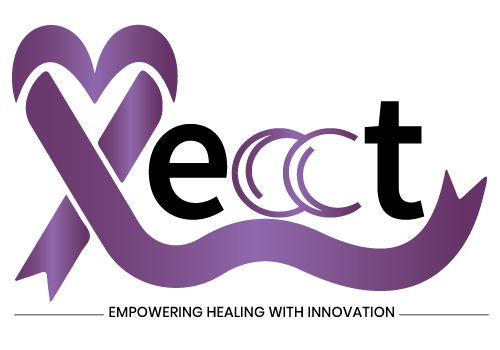ECCT:
A Versatile Solution for Treating Various Cancers
From Early-Stage to Advanced Cancers, Discover How ECCT is Changing Cancer Therapy.
Explore How ECCT Can Help
You or a Loved One
Introduction to ECCT Applications
Electro-Capacitive Cancer Therapy (ECCT) offers a non-invasive, revolutionary approach to cancer treatment by using intermediate-frequency, low-intensity electric fields to disrupt cancer cell growth. It is effective for a wide variety of cancers, particularly those resistant to conventional therapies. ECCT is a promising alternative or complementary option for treating cancers at different stages, including metastases.

Key Applications of ECCT
Glioblastoma and Brain Tumors
01
o Challenges
Glioblastoma is one of the most aggressive brain cancers, difficult to treat with traditional methods such as surgery and chemotherapy.
o Application of ECCT
By disrupting the mitotic process in cancer cells, ECCT has shown promise in treating brain tumors, particularly glioblastoma, by preventing tumor growth and shrinkage without the need for invasive surgery.
o Benefits
ECCT offers a safer alternative to Tumor Treating Fields (TTF) with non-contact electrodes, which reduces skin irritation and allows for easier, long-term treatment.


Breast Cancer
02
o Challenges
Advanced breast cancer can metastasize to other organs,complicating treatment and reducing the effectiveness of chemotherapy.
o Application of ECCT
ECCT has been effective in shrinking tumors and managing metastatic breast cancer by targeting highly proliferative cells. Its ability to be administered at home over long periods makes it ideal for chronic management.
o Benefits
Patients can use ECCT daily for 2-6 hours with minimal side effects, avoiding the systemic toxicity common in chemotherapy.
Lung Cancer
03
o Challenges
Metastatic lung cancer often spreads rapidly, making it difficult to control with conventional therapies.
o Application of ECCT
ECCT has demonstrated effectiveness in shrinking lung cancer tumors, particularly in cases where chemotherapy has failed. Its ability to target both the primary and metastatic sites simultaneously makes it a valuable option for lung cancer patients.
o Benefits
The non-invasive nature of ECCT, combined with its compatibility with other treatments, helps extend survival and improve quality of life without the common side effects of chemotherapy.


Cancers of the Digestive System
04
o Challenges
Colorectal and pancreatic cancers often require invasive surgeries and are difficult to treat at advanced stages.
o Application of ECCT
ECCT has been successfully applied to digestive system cancers by inhibiting tumor growth through electric field-induced mitotic arrest. This therapy reduces the need for invasive surgery, especially in metastatic cases.
o Benefits
The treatment can be conducted at home, minimizing disruption to the patient’s life while providing effective cancer control.
Metastatic Cancer
05
o Challenges
Metastatic cancer, where tumors have spread to multiple organs, presents a major treatment challenge as systemic chemotherapy may not be effective.
o Application of ECCT
ECCT has been highly effective in treating metastatic cancers by focusing on small metastatic nodules. The therapy’s non-invasive nature allows it to target multiple metastases simultaneously, reducing tumor load and improving survival rates.
o Benefits
This therapy can be used alongside surgery and chemotherapy, enhancing overall treatment efficacy while maintaining a low side-effect profile.

Mechanism of Action and Clinical Applications
> Disrupting Cell Division

ECCT works by applying electric fields that disrupt the microtube polymerization process during cell division (mitosis), resulting in mitotic arrest and eventual apoptosis (programmed cell death) in cancer cells. This precise mechanism targets only rapidly dividing cancer cells, sparing normal, slower-dividing cells.
> Clinical Evidence

Studies on ECCT have demonstrated tumor shrinkage, improved survival rates, and reduced side effects in patients with cancers such as glioblastoma, breast cancer, and lung cancer. This therapy has been validated in both early-stage and late-stage metastatic cancer treatments
> Combination with Other Therapies

ECCT can be combined with conventional therapies like chemotherapy, radiation, and surgery to increase treatment efficacy. For example, it can shrink tumors pre-surgery or help reduce tumor recurrence post-surgery
Advantages of ECCT
Non-Invasive

Minimal Side Affects
The therapy is associated with fewer side effects compared to chemotherapy, making it ideal for long-term treatment. Mild side effects, such as skin irritation or nausea, are easily manageable

Patient-friendly
ECCT devices are portable, allowing patients to receive treatment at home while maintaining their daily routines. This improves patient compliance and quality of life during treatment.


Electro-Capacitive Cancer Therapy (ECCT) offers a transformative approach to cancer treatment by providing a non-invasive, electric field-based method for disrupting cancer cell growth. Its applications across multiple cancer types, including glioblastoma, breast cancer, lung cancer, and metastatic cancers, make it an invaluable tool in modern oncology. ECCT’s versatility, safety, and compatibility with other treatments position it as a leading option for patients seeking effective cancer care with fewer side effects.
Consult Our
ECCT
Cancer Therapy Experts
For Your Device!
